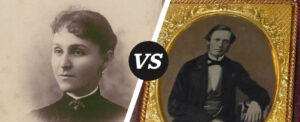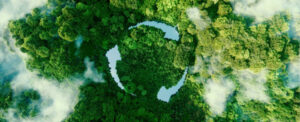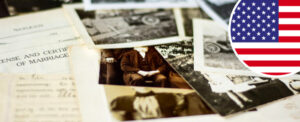Have you ever seen a vintage black and white photo that was on a small plate of metal? If so, then you’ve probably seen a tintype!
Tintypes are unique photos of metal that were popular in the mid-19th century and which look to be making a comeback as a popular form of art.
But what are tintypes, when were they used and are they valuable?
Keep reading to find out!
What are tintypes in photography?
Tintypes (also known as ferrotypes) are a type of photograph that was very popular during the late 1800s. They were made by coating a thin sheet of metal with a photographic emulsion and then exposing it to light.
Contrary to popular opinion, the metal plate used was made from iron, not tin, which explains the origins of its more formal name: ferrotype (‘ferrous’ means containing iron).
They became popular because they were very cheap to produce and could be developed much more quickly than other photographic processes at the time.
This made them ideal for street photographers who could take a picture and then have it ready to sell to their subject in a matter of minutes.
Did you know? A French photographer called Adolphe-Alexandre Martin invented the process. They were originally known as melainotype, then ferrotype by V.M. Griswold of Ohio, before being coined tintypes by the public [1] .
What were tintypes used for?
Tintypes were popularly used by itinerant photographers who would set up a mobile studio at fairgrounds and other public events. They were also used by the military for photographing soldiers and by the police for taking mugshots.
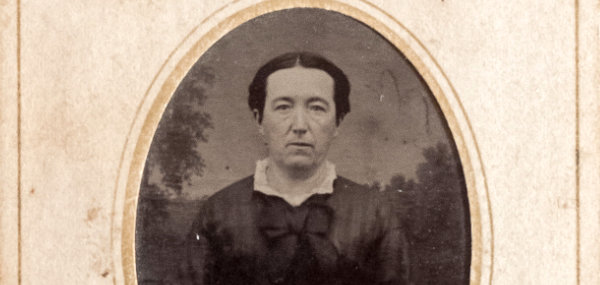
The speedy tintype process combined with the sturdy metal base meant they were a natural choice to document the American Civil War and photographs of soldiers.
Tintypes were popular throughout the mid-nineteenth century, but were soon replaced by cartes de visite (portrait photographs printed on paper) but remained widely used by street photographers and fair artists
Why do tintypes look dull?
Tintypes look dull because they’re underexposed to help decrease the time it took to create them.
The reason it works is that, when combined with the dark lacquer background of the photographic plate, the image appears to be a dull-toned positive.
To help you understand, I’ve simulated an underexposed photo in Photoshop. When this digital tintype appears on a light background, it appears negative. However, the same image on a dark background appears as a dull-toned positive, just like a tintype.
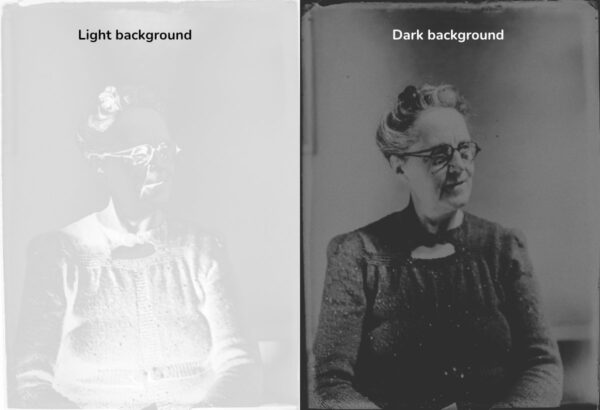
This ability to utilize underexposed images allowed for shorter exposure durations, making it ideal for quick portraits, especially when compared with other photographic processes at the time (like daguerrotypes).
How can you tell if a picture is a tintype?
Tintypes have distinct characteristics that help to identify them. Here are 5 clues to look out for:
- The image is on a thin sheet of metal (rather than on paper or glass)
- Tintypes are quite dull and low contrast
- They often show buckling and pockets of rust (because the iron used is rusting)
- The black and white photo may feature hand-tinting
- They are usually smaller than other types of old photographs (2 ¾ x 3 ¼ inches)
When did they stop making tintypes?
Tintypes were used up until the 1950s, however, their popularity was fading. In 1935 Kodachrome film was introduced. This new type of film allowed for colour photographs, which eventually led to the decline of tintype photography.
However, there is a recent resurgence in the popularity of tintypes, as photographers appreciate their unique look and historical significance. Check out this article on masterclass.com which details how to make your own tintypes.
What’s the difference between a tintype and a daguerreotype?
Daguerrotypes were earlier than tintypes and took a lot longer to produce. Sitters may have to sit for up to 20 minutes to take the photo (no wonder they didn’t smile!)
Here are some of the key differences between a daguerrotype photo and a tintype:
- Unlike a tintypes, a daguerrotypes surface is highly reflective
- Tintypes are made of a thin sheet of iron; daguerrotypes were made of copper
- Rust may appear on a tintypes because of the iron used, but does not on a daguerrotype
- Tintypes were often hand-tinted after being developed, whereas daguerrotypes were not (eg. you notice a lot of rouge on peoples cheeks in tintypes)
- Tintypes are dull and low contrast and not as clear as daguerrotypes (due to being under-exposed for quicker developing times)
- Daguerretypes are often encased in a glass frame for protection where as tintypes may only have a paper sleeve (if that)
- Tintypes are usually smaller than daguerrotypes and other photographs of the same time period
Top tip: A quick way to test for a tintype is to hold a magnet close to it. If it’s magnetised you almost certainly have a tintype!
How do you date a Tintype?
There is no surefire way to date a tintype, but there are a few clues that can help:
- Tintypes were produced in the latter half of the 19th century
- If the photograph is in a paper sleeve, it is likely to be from the 1860s or later
- The style of the photograph may give clues as to its date (eg. fashion, props etc.)
What came after the tintype?
Carte de Visites became popular in the 1860s and were a step up from tintypes. They were small photographs mounted on cards that could be easily mailed or carried around.
However, Kodak ‘s Brownie camera, which was introduced in 1900, made photography more accessible to the general public and led to the decline of carte de visites and tintypes.
However, tintypes were reportedly still used at carnivals and sideshows until as late as 1950. [2]
However, there is a recent resurgence in the popularity of tintypes.
Are tintypes valuable?
Tintypes are not particularly valuable, but they can be worth a few hundred dollars if they are in good condition. If the tintype is of historical significance, it may be worth more.
For example, a tintype bought for a few dollars in California in 2010 turned out to be of Billy the Kid photographed in 1878. It is said to be only one of 2 photographs of him in existence. It’s now thought to be worth millions of dollars; the only other photograph of the outlaw was sold at auction for $2.3 million in 2011!
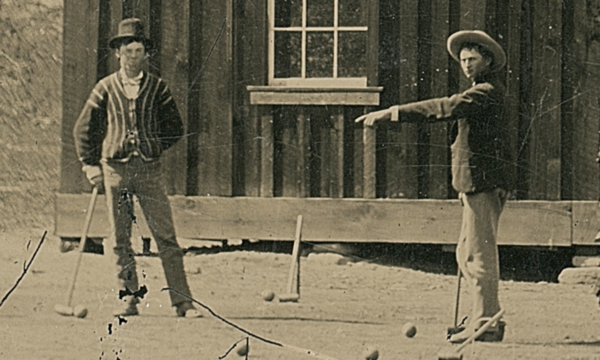
However, for the most part, a typical tintype ranges in price from a few dollars to maybe $200-$300 USD max if it’s excellent quality and has some documents or noteworthy history to it. The original seal and case also increase the price.
Tip: I find eBay is a great place to buy and sell tintypes. The price ranges from a few dollars to a few hundred dollars.
What are the most valuable tintype photographs?
The most valuable tintype photographs are those that are of historical significance. For example, a tintype of Abraham Lincoln would be worth more than a photo of an anonymous person.
As mentioned, the tintype of Billy the Kid found in 2010 is thought to be worth millions of dollars.
How do you store tintype pictures?
Tintypes are pretty robust but if you have a collection that you’d like to preserve, here are some tips:
- Store away from light to avoid photo fading
- Store in a cool, dry place and away from extremes in temperatures
- Use acid-free materials when storing or displaying your collection
- Make sure that the tintypes are not in contact with each other as this could cause them to stick together or scratch
- I suggest storing them in an acid free paper folders (or makeshift ones simply by folding acid free paper)
- Preferably store them on edge rather than stacked
These measures will help to ensure that your tintypes will be around for many years to come!
Conclusion
Tintypes are a type of photograph that was popular in the latter half of the 19th century. They are made by coating a metal plate with photographic emulsion and exposing it to light.
Tintypes are not particularly valuable, but they can be worth a few hundred dollars if they are in good condition and even more if of historical significance.
Here is a summary of the topics covered in this article (click each to learn more):
- What are tintypes in photography?
- What were tintypes used for?
- Why do tintypes look dull?
- How can you tell if a picture is a tintype?
- When did they stop making tintypes?
- What's the difference between a tintype and a daguerreotype?
- How do you date a Tintype?
- What came after the tintype?
- Are tintypes valuable?
- What are the most valuable tintype photographs?
- How do you store tintype pictures?
So there you have it, tintypes in a nutshell! And with the renewed interest in tintypes, who knows? We may be seeing them more often in the future!
Thanks for reading. If you enjoyed this post, please share it with anyone you think may also enjoy it.

